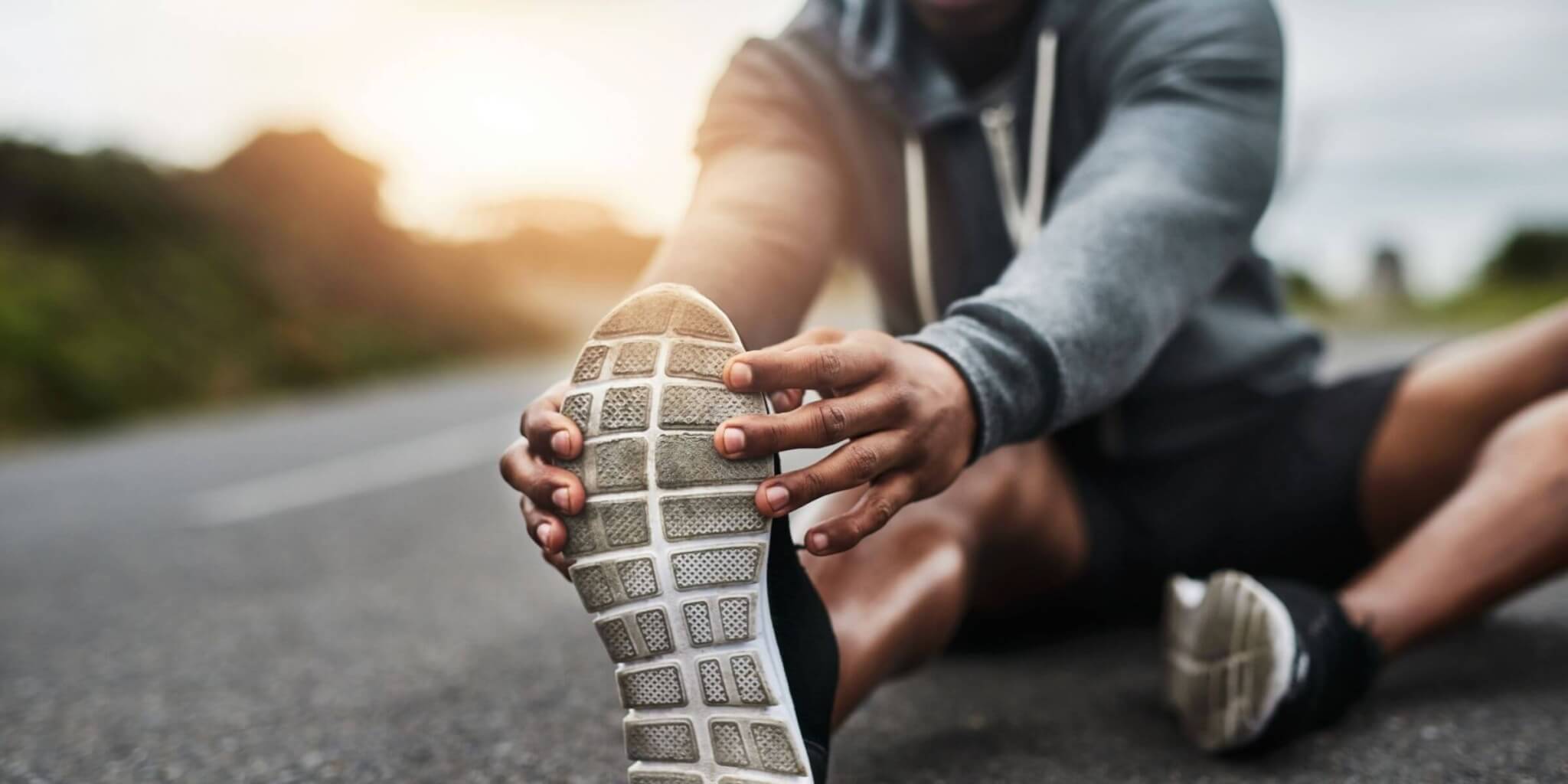Construction work is tough on the body, and back pain is one of the most common issues workers face. Long hours of lifting, bending, and repetitive movements can strain the spine and lead to injury. Gentle stretches like cobra pose and child’s pose can relieve tension, improve flexibility, and strengthen the muscles supporting your back, keeping you flexible and pain-free.
Quick look
- Construction work is physically demanding, placing strain on the back and putting workers at risk for back injuries.
- Back injuries account for 20% of all injuries and illnesses in the workplace.
- Gentle stretches like cat and cow, cobra pose, child’s pose, and power back rotations can help prevent and relieve back pain.
- Hold each pose for at least 1-2 minutes to improve flexibility, remember to breathe, and don’t push to the point of pain.
Why stretching is essential for construction workers
Construction work can be physically demanding. Depending on your role, a typical day might involve hours of climbing up and down ladders, lifting steel beams into place, or jackhammering concrete. This physical labor can take its toll, resulting in fatigue, muscle aches, and chronic back pain.
According to the Bureau of Labor Statistics, back injuries account for one of every five injuries and illnesses in the workplace. Increasing core strength and lifting correctly can help prevent lower back pain. However, when you’re already suffering, stretching can help loosen tight muscles, release tension, and ease soreness.
Top 4 gentle stretches to relieve back pain
These simple stretches will help loosen sore muscles and reduce lower back pain. You should feel a mild to moderate stretch throughout your back, but stretching should never feel painful.
1. Cat and cow
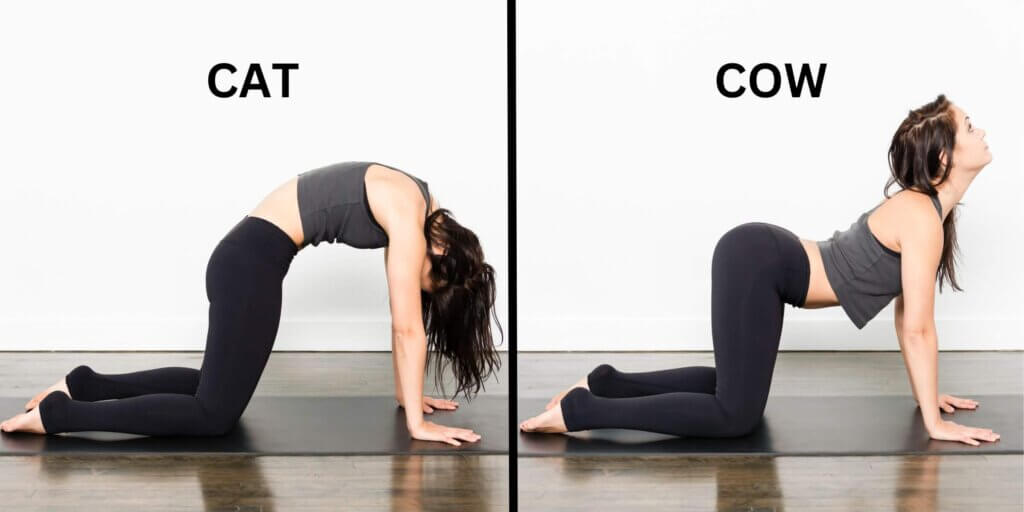
Why we recommend this: Cat and cow is a simple stretching sequence involving rounding your back like a hissing cat and then arching it to resemble a cow. Moving through these two postures helps stretch and strengthen the muscles along your spine, improve posture, and increase mobility of the spine. It’s a great movement to begin your series of stretches since it mobilizes the spine and opens the door to deeper stretches.
How to do it: Start on your hands and knees with your spine in a neutral position. As you inhale, raise your head, arch your spine, and look upwards for cow pose. As you exhale, lower your head, tuck your tailbone under, round your back, and breathe deeply into your ribcage for cat pose. Continue moving between these two postures for 1-2 minutes, following the normal rhythm of your breath.
Modification: If this position hurts your knees, tuck a folded towel or yoga mat underneath to provide cushioning.
2. Cobra pose
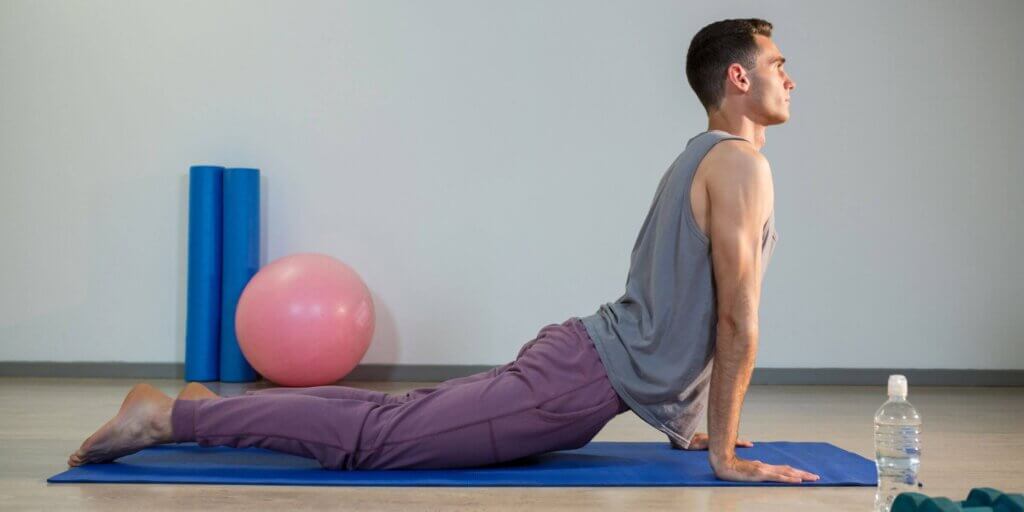
Why we recommend this: On the job site, you spend a lot of time curling inward as you focus on detailed tasks, carry heavy loads, and operate machinery. The cobra pose helps invert that posture, flexing your back up and out to release tight muscles and improve posture.
How to do it: Lie on your stomach on a yoga mat or soft surface with the tops of your feet pressed against the mat. Bring your forearms to the mat and rest on your elbows so your arms form a 90-degree angle, pressing your palms into the mat slightly wider than shoulder-width apart. As you inhale, press into the mat, lift your chest, and tilt your head back. Hold for a few moments before releasing, then repeat. For a deeper stretch, straighten your arms and align your wrists under your shoulder while keeping your hips glued to the ground.
3. Lower back rotation
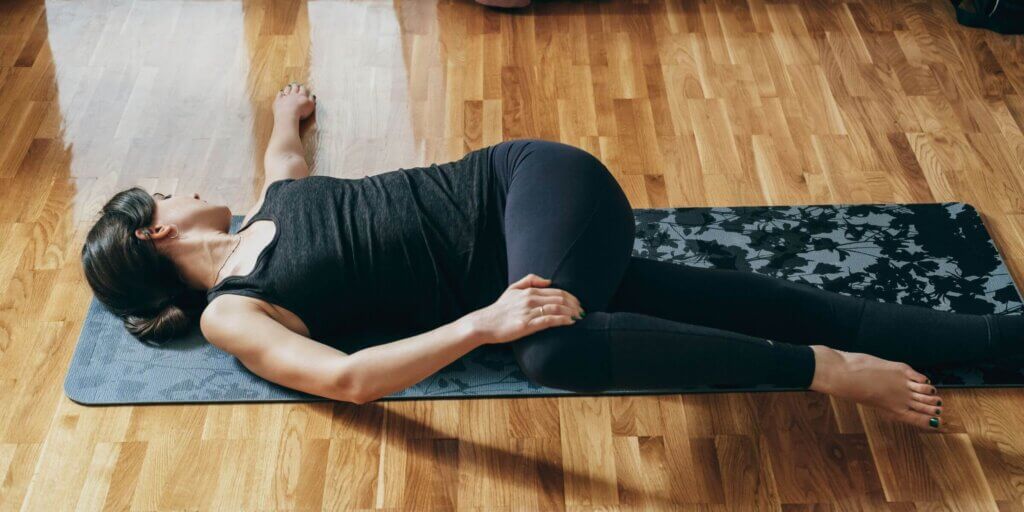
Why we recommend this: Spinal stiffness is common when working long hours and carrying heavy loads. Spinal rotations help loosen the spine, reduce muscle pain, and strengthen the back.
How to do it: Lie on your back, with your knees bent and feet flat on the floor. Keep your shoulders touching the mat. Let your knees fall gently to one side and hold them there for 30-60 seconds. Return your knees to the center and rotate them in the other direction. Repeat a few times, and notice whether your knees can fall further each time.
4. Child’s pose
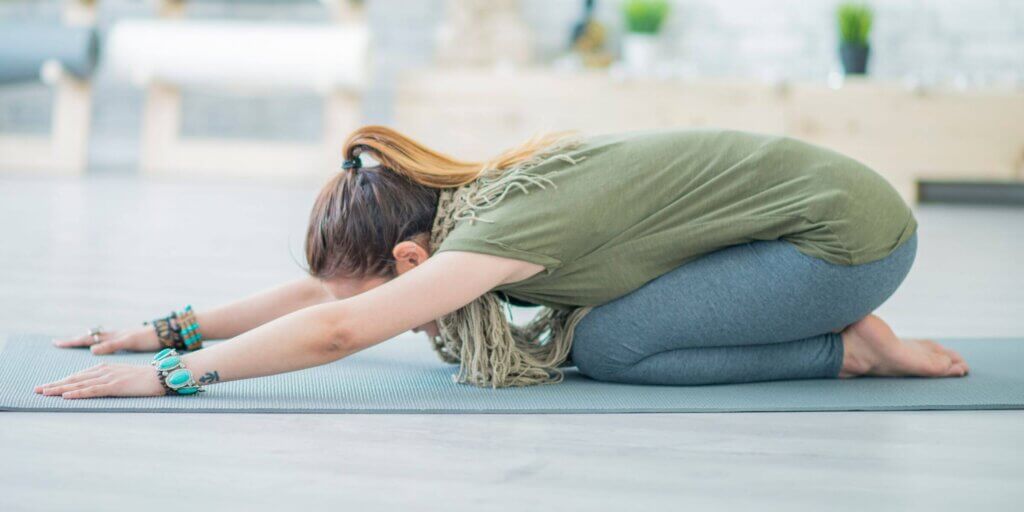
Why we recommend this: Child’s pose is a fantastic resting posture designed to stretch the back and hips and create a sense of relaxation and calm. It’s a great pose to do at the end of your stretching session. Allow your body to release into the stretch, and breathe deeply as you relax into the posture for up to five minutes.
How to do it: Kneel on a yoga mat or soft carpet and move your knees a little wider than hip distance apart with your toes still touching. Lean forward, resting your belly against your thighs and placing your forehead against the mat. Stretch your arms in front of you with your palms to the floor, hands shoulder-width apart, or extend your arms back along your legs, palms down. Close your eyes and breathe into the posture, relaxing your jaws, eyes, neck, and back. Stay here for 1-2 minutes.
Modification: If you have limited knee mobility, tuck a bolster pillow or rolled-up towel behind your knees to reduce strain. Use a yoga block or pillow under your forehead if you have trouble reaching the mat. Experiment with different props until you find a position offering a mild stretch without discomfort.
Top tips to maximize your stretching benefits
1. Hold it: Hold static stretches for at least thirty seconds to give muscles time to release.
2. Start slow! Pushing yourself too far can set you back by causing further pain and injury.
3. Breathe: Gently hold each stretch and imagine breathing into the tight muscles, creating space and looseness.
4. Time it right: Warm muscles are easier to stretch than cold ones—if you can stretch right after work, it’ll help loosen those tight back muscles before they stiffen up and start causing you pain.
Bottom line
It’s common to stretch after an intense game or challenging workout, so why not incorporate stretching after a physically demanding workday? Construction jobs can be very demanding, and adding a routine of back stretches to your daily schedule can help protect your back while keeping you strong, both on-site and off.
For more tips on staying healthy Under the Hard Hat, sign up for our newsletter and follow us on Instagram!
